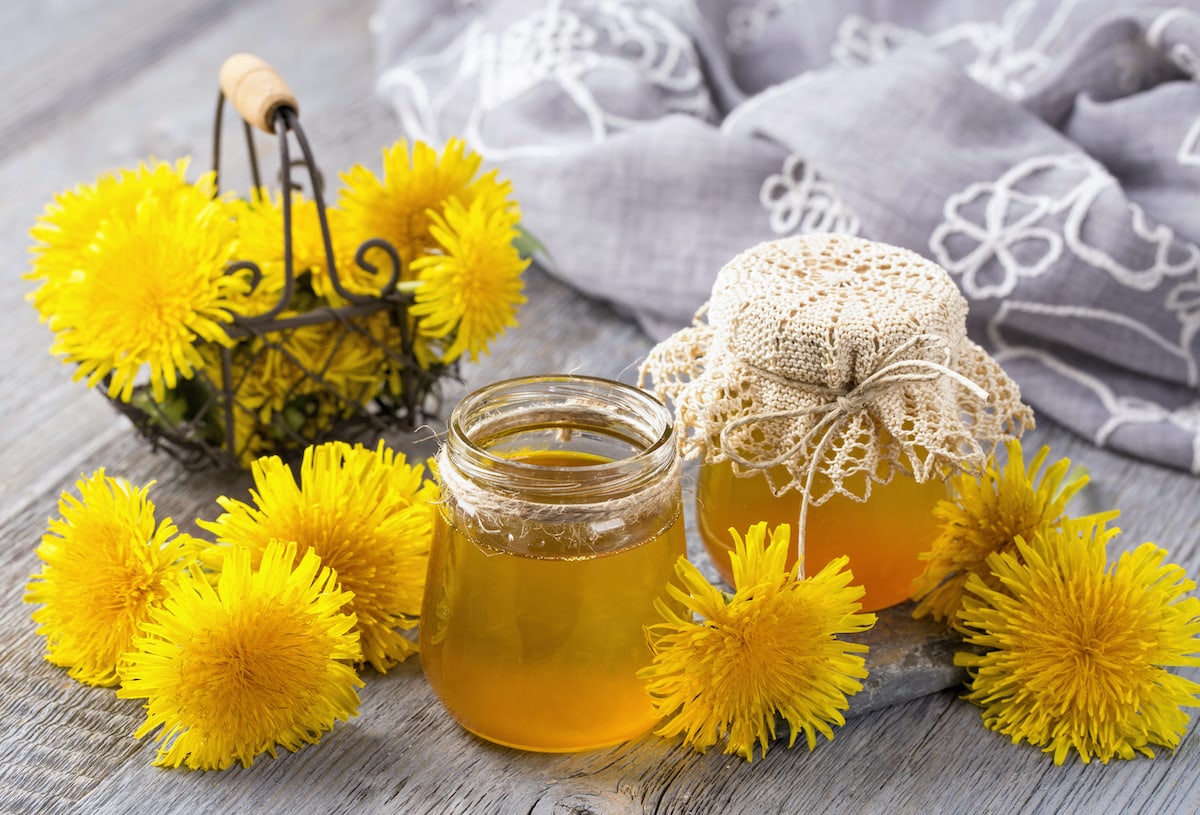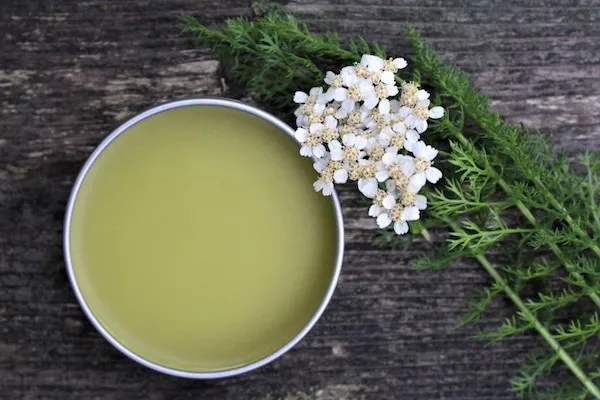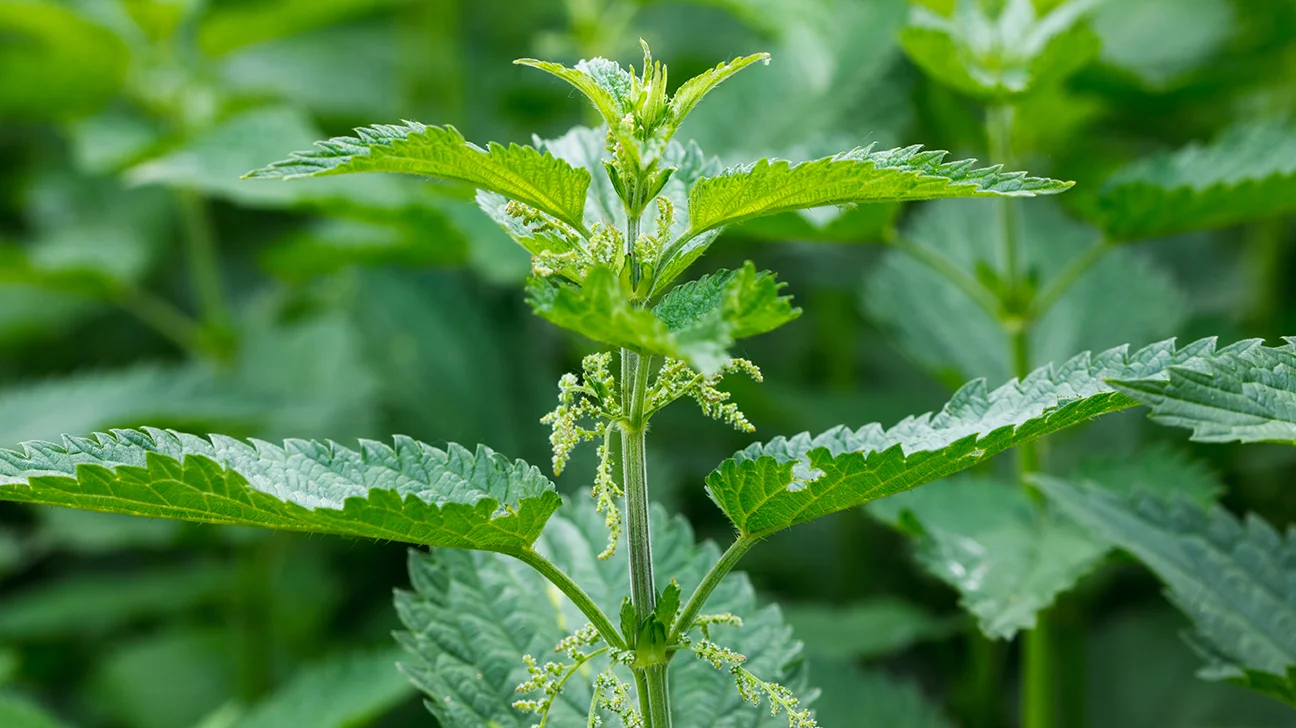
Spring is a time of anticipation. We’re all planning our gardens and planting some of the earliest crops. But we don’t have to wait until midsummer for our first harvest – we can start harvesting food now! There are some incredible delicious and medicinal wild edible plants that are often tossed aside as “weeds”. But after learning about some of these amazing plants and their variety of uses, I hope you think twice before eradicating them from your lawn or garden.
Here are some common weeds wild edible plants that you’re likely to encounter in your landscape this spring and summer, and why they might be worth keeping around depending on where you find them. Please remember to never harvest or use a plant, internally or externally, unless you are absolutely certain of its identification. Also, once you are certain of the plant ID, introduce yourself to it slowly and carefully – even seemingly harmless plants can cause the body to react strangely when used in large quantities if you’re not used to it. Also, be sure to research potential side effects or sensitivities of the plant you intend to use to make sure it’s safe for you.
Plantain
Plantain is one of the first herbaceous plants you’re likely to see in the season, as soon as the snow melts. It’s not to be confused with the tropical banana-like plantain, which only shares a common name with this little herb. Plantain is an incredibly hardy plant that can thrive in the harshest environments, like cracks in the pavement, between stones or bricks, or in the lawn. Many gardeners ignore this nutritious and medicinal plant, or even regard it as an irksome weed and remove it from their landscape, but plantain is enormously valuable both in your garden and your kitchen! Plantain is commonly used as a poultice or salve to treat wounds by drawing infection or splinters out of the body. The young leaves are very nutritious, and plantain may also treat ailments like urinary tract disorders, respiratory system disorders, skin ailments, and more. It's best to harvest plantain in the spring, as the leaves toughen and almost become woody as they age over the summer. If you’d like to give plantain a try, simply look around your landscape – once you know what it looks like, you’ll start seeing it everywhere!
Chickweed
A member of the carnation family, chickweed is another common “weed” found in early springtime gardens and landscapes. It’s a very nice springtime edible with shallow roots, stretching vine-like stems, and pretty little white flowers. Chickweed is a valuable edible plant, rich in iron, that can be eaten raw or cooked like spinach. It also has various healing properties: It's a soothing, cooling, slightly saline herb that can be used in a soothing bath, made into a healing poultice, or brewed into a healthy tea. Chickweed can also be used medicinally in products such as infusions, liquid extracts, medicated oils, ointments, and tinctures. The chickweed that you don’t harvest this spring makes a nice natural mulch in garden walkways as well, to prevent soil degradation. Although I do enjoy harvesting as much chickweed as I can, it can grow somewhat aggressively and may interfere with your garden plans. If you need to pull some chickweed to make room for your crop plants and find yourself with too much to harvest, try feeding some to your chickens! They tend to love it, hence the common name of this pretty little plant.
Dandelion
I know there are lots of folks out there who go to war against this plant every spring and summer, but I may just have to dedicate a whole blog post to how wonderful dandelions are. They are vigorous little plants that may be a bit aggressive in the garden, but as they crop up in your lawn this year, try harnessing their wonderful edible and medicinal properties! Every part of the dandelion is edible -- from the roots, which can be dried, roasted, and ground into a coffee-like drink, to the yellow flowers, which can be eaten as they are or made into lovely floral teas, jellies, or candies. Many folks regard the leaves as bitter, but tender young dandelion leaves don’t taste as strong and can be eaten raw or cooked. Dandelion greens stimulate the body and contain vitamins A, B, C, and E, as well as sodium, potassium, and magnesium. The roots have been used as a gentle laxative and to relieve jaundice, skin diseases, and eczema. Dandelions are a member of the Asteraceae family – the same family as daisies and sunflowers. My favorite way to use dandelions is in sweet tea or jelly. Give it a try this spring!

Purple Dead Nettle
Purple dead nettle is a pretty little herb in the mint family that appears early in the springtime in gardens, lawns, or disturbed habitats. The leaves and flowers are edible, with a mild, grassy taste and a peach-fuzz texture. The purple leaves at the top of the plant tend to be a little sweeter than the green leaves at the bottom. The leaves can be used with other wild greens to make a tasty pesto, or other recipes where you might use a leafy green vegetable or herb. This herb can also be made, fresh or dried, into a tea to potentially improve kidney health and relieve seasonal allergies, or used as a poultice for wounds to reduce inflammation and promote healing. Purple dead nettle can also be made into a medicinal salve for use on wounds. This herb may also promote a healthier garden: since purple dead nettle blooms early in the spring, it's a significant food source for bees. Keeping pollinators fed and happy will encourage them to hang around in your landscape, encouraging biodiversity and pollination in your garden. Plus, dead nettle (along with a few other plants mentioned here, such as mullein and lamb's quarters) is a plant that pumps subsurface nutrients to the surface, making them easier for crop plants to absorb. They also act as a wonderful ground cover or green mulch in the garden.

Red Clover
A member of the pea or legume family Fabaceae, red clovers are packed with protein, making them highly nutritious edible plants. Red clover is most commonly used in teas, good for colds, coughs, bronchitis, and nervous conditions. Boiling the plant material destroys vitamins, so to make clover tea, pour hot or boiling water over the plant material and let it steep. Although red clover grows fast and may be a bit intrusive in your garden space, it’s a wonderful plant to keep around the garden and in your kitchen! Clovers, like peas and beans, are nitrogen fixing plants, which means that they make nitrogen readily available for other plants around it. Nitrogen is a vitally important plant nutrient, especially for common crops like tomatoes, so I’m always grateful when I see some red clover growing near my fruit and vegetable plants!
Lamb’s Quarters
Also known as wild spinach, lamb’s quarters annoyed me for most of my life until I learned how amazing this plant is. I used to pull it from my garden and toss it into the compost pile, completely oblivious that I was throwing a valuable crop away! A member of the quinoa family, wild spinach is a fast-growing plant that can get taller than five feet. Its leaves are very mild and tasty when eaten fresh – almost like a combination of spinach and kale – and they can also be dried to make a nice tea with a savory, almost salty flavor. My favorite use of this plant is to make a giant pot of “tea” with it, add a few veggie scraps or seasonings, simmer to allow the flavors to develop, and then strain. This makes a fantastic vegetable broth! This plant is high in vitamins A and C, but also contains oxalic acid and Chenopodium oil, and therefore shouldn’t be eaten in high quantities. Because this plant can be a bit intrusive in the garden, I try not to let it grow too large and take over. I try to harvest lamb’s quarters while it’s still young and small, while the leaves are tender, and I allow it to grow near the garden but not directly in my garden beds.
Yarrow
Yarrow is a beautiful perennial flower in the sunflower and daisy family, Asteraceae. It is cultivated in gardens, but can also be found in roadsides and meadows. This plant is edible and medicinal, with a long history of use to heal wounds and stop blood flow. It can be dried and combined with other healing plants, like plantain and comfrey, or it can be made fresh as a poultice and applied directly to a wound. It's also a great healing plant to use in a medicinal salve. When consumed as a tea, yarrow can help relieve colds, lower blood pressure, and improve digestion and circulation. Yarrow can make a great companion plant for other meadow plants, or crops such as beans, mustards, eggplant, fruit trees, strawberries, lavender, and more. Plus, according to The Rodale Herb Book, yarrow increases the aromatic quality of herbs when grown near them, which helps to deter insect pests from the garden. Yarrow is drought tolerant and hardy, and attracts pollinators to its pretty flowers. However, it can spread very easily throughout the garden and potentially become invasive, so be sure to manage new growth if you plan to keep it in your garden with other crops. The yarrow I planted in my garden hasn’t spread in the last few years, but it has become a big ol' bush of a plant. When I think it’s growing a little too big, I just divide the plant and give it away, or plant it somewhere else in the garden.

Mullein
Mullein is a very approachable, easy-to-use plant. It is often found in sunny locations around lawns or gardens, or in roadsides or fields. The leaves and flowers of this plant are edible, but the seeds are not -- plus, the leaves are hairy like a lamb’s ear plant -- so I find it safest and easiest to just use the leaves in tea. Mullein tea is amazing: it has a wonderful mild flavor, and is fantastic in relieving insomnia as well as coughs and bronchitis, helping to remove excess respiratory mucus to make breathing easier. Smoking the dried herb offers similar benefits. Mullein is also a useful plant to keep around the garden; since they grow so tall with big, long leaves, the leaves can be chopped from the plant and used as a fantastic nutrient-dense, biodegradable mulch. Their thick taproots reach deep into the soil to help pump soil nutrients up to where crop plants can reach them, while also opening up areas of the subsoil that shallow-rooted crop plants may not be able to reach. Plus, the pretty yellow flowers attract lots of bumblebees, encouraging pollination for your garden crops. I allow mullein to grow in my garden, but try not to let it overcrowd my more sensitive plants. I’ve found that the best place for them is along the edges of my garden, and around (but not in the middle of!) walkways.

Stinging Nettle
Stinging nettle can be an intimidating plant to use, but its edibility and medicinal benefits make it worth it! The trick with stinging nettle is to cook it until just tender to remove the sting – I've enjoyed sautéed nettle over mashed potatoes once and it was wonderful! (And for what it’s worth, the “sting” of nettle is medicinal in and of itself, increasing blood flow to the affected area and relieving joint pain). My favorite way to consume nettle is in tea; it has a nice, mild seaweed-like flavor, and is rich in vitamins A, C, and D, as well as iron, sodium, potassium, phosphorous, calcium, and silica, making it an amazing product to boost the immune system. It’s also useful in relieving fevers and head colds, migraines, high blood pressure, and anemia. Nettle also has tremendous uses in the garden– added to compost, it can help to form an amazingly nutrient-dense compost, which is the foundation of a healthy garden! Soaking stinging nettle in water creates a nettle tea, which can be fed to plants as an amazing all-natural plant fertilizer. Because nettle can run rampant in a garden unless maintained, I like to pull stinging nettle when it comes up in a high-use area in the garden. Once I pull it, I can harvest it for myself or add it to a compost pile or water to make plant fertilizer.

This is not a complete list by any stretch of the imagination – there is a tremendous variety of edible wild plants out there to forage and enjoy!
If you’d like to learn more about these plants and the wonderful benefits they offer, I highly recommend checking out Some Useful Wild Plants by Dan Jason. This easy read is very informative and approachable, providing just enough information to get you started in foraging -- plus, the plant drawings throughout are adorable. The Herb Society of America Encyclopedia of Herbs and Their Uses by Deni Bown is a big, colorful book that's packed with information on medicinal plants. It focuses less on foraging for plants and more on the taxonomic classification of plants, as well as their growth patterns and edibility/medicinal uses. Another interesting book to pursue, if you're interested in plants and medicine, is Power Plants by Frankie Flowers. This book focuses on the medicinal and nutritional qualities of a huge variety of plants, from garden vegetables and herbs to trees and shrubs. Also, I've really enjoyed reading National Geographic Desk Reference to Nature's Medicine by Steven Foster. This book takes readers on a journey around the world to learn about the growing qualities, habitat, cultivation and preparation, and uses of healing plants.
All of these great books are available here at the library -- be sure to check them out! Hopefully you'll find yourself making friends with the plants you once thought were just pesky weeds.